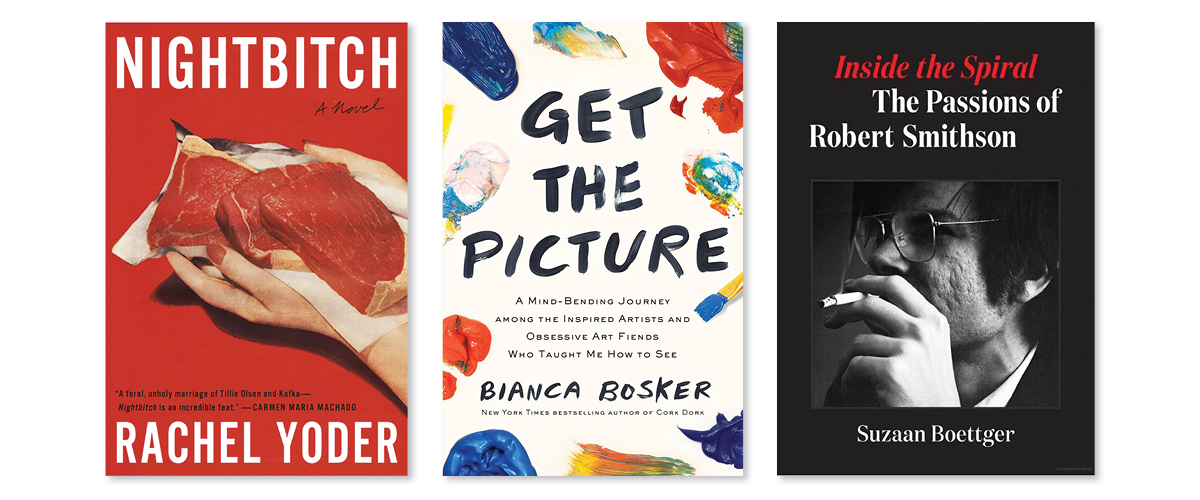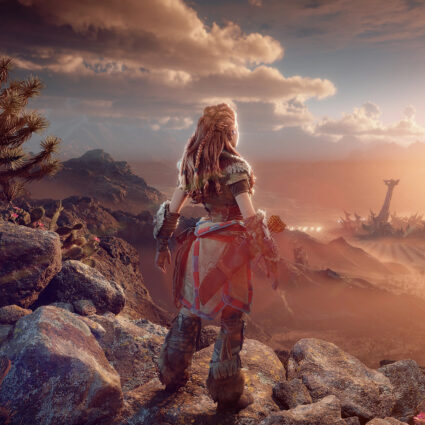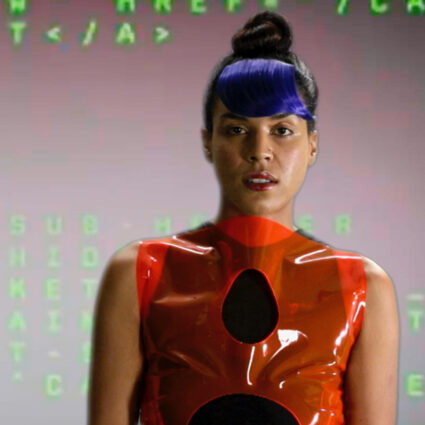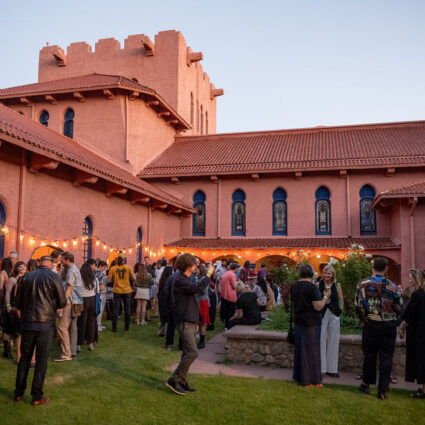The Artist’s Way for werewolves, a guide to forgetting the Alamo, and other top 2024 reads from the Southwest Contemporary editorial team.

Editing is reading with a scalpel, and if that’s your job, it can be hard to put down the sharp object. Backseat line and copy editing might inflate the ego, but it tends to ruin a recreational reading experience. These are the long reads—seven books and one novella-length feature story—that sidelined our editorial instincts and immersed us as readers in 2024. And in case you’re wondering, here are our picks from 2023.
Jordan Eddy, editorial director
Nightbitch
by Rachel Yoder, Doubleday, 2021
Before Nightbitch was a black comedy horror film written and directed by Marielle Heller, it was a magical-realist novel by Rachel Yoder that hit me in the gut. Its cover features hands with scarlet fingernails clutching shiny steak cutlets, setting the tone for a ravenous and queasy parable about a mother who transforms into a feral dog. She’s also a talented artist who’s been blinded by rage, and is questing for a new sense of self with the abandon of Elena Ferrante’s wildest protagonists. Perhaps The Artist’s Way should have mandated preying on small animals.
Get The Picture: A Mind-Bending Journey Among the Inspired Artists and Obsessive Art Fiends Who Taught Me How To See
by Bianca Bosker, Viking, 2024
“Pretension hung in the air like an unacknowledged fart,” writes Bianca Bosker of her first gallery hop in Chelsea. Early on, it seems like the veteran journalist’s headlong dive into the New York art world is a classic roll-up: she embeds at an emerging art gallery that might gain her access to bigger parties and juicier targets. But when the young dealer she’s assisting turns cartoonishly toxic (or bracingly realistic, if you’ve ever met a power player from that slice of the market), she takes a U-turn at the Koons and seeks out a kinder and wiser breed of art beast that feels more common to my Southwestern experience.
Inside the Spiral: The Passions of Robert Smithson
by Suzaan Boettger, University of Minnesota Press, 2023
Robert Smithson’s face was famously pocked with scars formed by anxious skin-picking. Suzaan Boettger attempts to read his moonscape like an astrologer in this off-kilter biography. By chapter two of Inside the Spiral, she’s theorizing about the land artist’s role as a “replacement child” for his brother, who died at nine, and how that may have stoked his messiah complex as an artist. Boettger’s armchair psychology might seem silly if this weren’t the lone biography of the Spiral Jetty creator. Her fanciful approach pays off in other places, though, curiously counterbalancing Smithson’s self-mythologizing—and surfacing his kitschy (and sometimes queer) early work.

Natalie Hegert, arts editor
Forget the Alamo: The Rise and Fall of an American Myth
by Bryan Burrough, Chris Tomlinson, and Jason Stanford, Penguin Random House, 2021
Having grown up under the flight path of Santa Ana’s John Wayne Airport, I’m not exactly a stranger to Alamo mythmakers and the vagaries of valorization. Yet I never had the distinction of enduring Texas’s seventh-grade history Alamo indoctrination (in my California middle school, I had to learn about the Gold Rush ad nauseam instead). This cheeky and nuanced book, a thoroughly fascinating history of the history of the Alamo, was not only an entertaining read, but eye-opening for me, leading to a greater understanding of the underpinnings, contradictions, and paradoxes of my adopted home state of Texas.
Linh Ly Is Doing Just Fine
by Thao Votang, Alcove Press, 2024
I make a point of always purchasing books by writers whom I’ve worked with, so when Southwest Contemporary contributor Thao Votang released her debut novel, I had to pick it up—and once I did, I had a hard time putting it down. Votang’s sardonic character of Linh Ly—chronically avoidant of romance in her own life, yet inordinately involved in her mother’s—survives a school shooting, becomes an unlikely spy, and finds herself intertwined in the lives of wealthy Dallas socialites. But it’s Linh’s wry observations of the excesses of the Texas 1% that had me guffawing out loud: “I should be prepared for cow rugs? What else?”
The Worst Hard Time: The Untold Story of Those Who Survived the Great American Dust Bowl
by Timothy Egan, HarperCollins, 2006
While I’ve been through my share of haboobs in the Texas Panhandle, it is hard to imagine living through the utter environmental devastation that was the Dust Bowl. Timothy Egan’s history, with its reliance on first-hand accounts, filled in with rich, masterful storytelling, brings you about as close to the experience as a book could. The only thing missing, in my view, is some perspective on the contemporary environmental catastrophes looming on our own horizon, but, given this book is nearly twenty years old now, those fears may not have seemed as close as they do now. Regardless, the lessons and warnings of the Dust Bowl, and the capitalistic greed and hubris that created it, are particularly pertinent in this day and age.

Lauren Tresp, publisher
The Deserter
by Sarah A. Topol, The New York Times Magazine, September 22, 2024
The entire September 22, 2024 issue of The New York Times Magazine was given over to “The Deserter,” a five-part reported feature the length of a long novella. The story is a feat of investigative reporting and storytelling that brings the reader into the lives of Ivan, a Russian soldier who defects after fighting in Ukraine, and his wife, Anna (pseudonyms). From the minutiae of this family’s day-to-day struggles to escape, the article telescopes out to the chaos and corruption of the Russian war machine, imparting a micro-macro perspective on the human costs of the ongoing conflict.
The Books of Jacob: A Fantastic Journey Across Seven Borders, Five Languages and Three Major Religions, Not Counting the Minor Sects
by Olga Tokarczuk, trans. Jennifer Croft, Riverhead Books, 2022
The Books of Jacob is a historical novel by Polish Nobel Prize in Literature-winner Olga Tokarczuk, who spent seven years creating this epic, doing extensive historical research. The brick-sized tome follows the story of Jacob Frank (a real historical figure), a Polish Jew and the leader of an 18th-century heretical religious movement who traveled between the Hapsburg and Ottoman empires. While the subject matter is hefty, its cast of characters enormous, and its timeline dauntingly long, this book is a joy to read. The characters are textural, the tragedy and pathos are threaded with winking comedy, and the themes sprawl out and forward with countless tendrils: language and scripture, religion and commerce, gender and sex, corruption and loyalty. An epic through and through.



